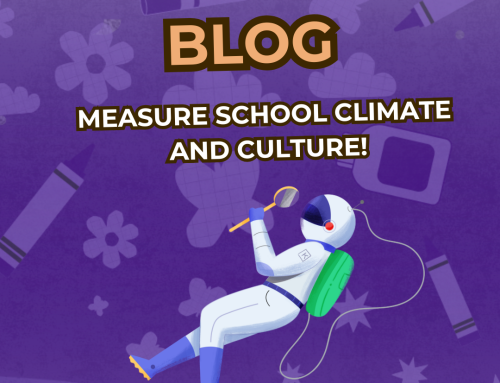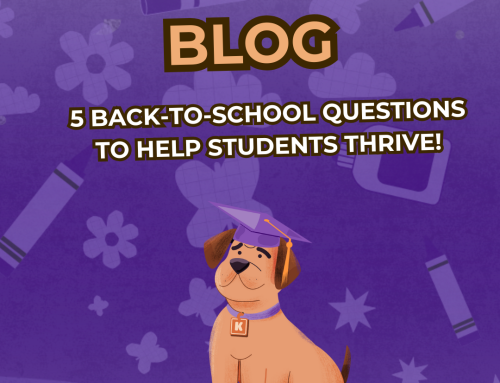Case Studies: Transforming K-12 Education with Real-Time Surveys
Introduction to Real-Time Surveys in K-12 Education
In the rapidly evolving landscape of K-12 education, the integration of technology has become paramount. One of the most impactful innovations is the use of real-time surveys. These educational surveys allow educators to gather immediate feedback from students and staff, enabling schools to make data-driven decisions that enhance the learning environment. Real-time surveys are not just tools for assessment; they are vital for fostering a culture of continuous improvement and responsiveness in K-12 education.
The relevance of real-time surveys in educational settings cannot be overstated. They provide insights into student experiences, engagement levels, and overall well-being, which are crucial for tailoring educational strategies. By leveraging real-time data, schools can address issues promptly, ensuring that both students, staff, and families feel heard and valued. This article delves into the transformative power of real-time surveys through compelling case studies, highlighting their role in enhancing student well-being and staff feedback.
—
The Importance of Student Wellbeing
Student well-being is a cornerstone of effective K-12 education. It encompasses emotional, social, and physical health, all of which significantly influence learning outcomes. When students feel safe, supported, and engaged, they are more likely to participate actively in their education, leading to improved academic performance and overall satisfaction.
Research shows that a positive school environment fosters higher levels of student engagement. This engagement is critical, as it not only enhances learning but also reduces dropout rates and behavioral issues. Schools that prioritize student wellbeing through initiatives like real-time surveys can identify areas of concern, such as mental health challenges or social isolation, and address them proactively.
Moreover, real-time surveys provide a platform for students to express their feelings and experiences, allowing educators to tailor interventions that meet their needs. By focusing on student well-being, K-12 institutions can create a more inclusive and supportive educational environment, ultimately leading to better educational outcomes.
—
Case Study 1: Implementing Real-Time Surveys to Support a Student in Crisis
At one school, a routine Kelvin pulse survey led to a moment that changed a student’s year. When asked, “Would you like to speak to an adult?” the student responded yes — triggering a real-time alert that immediately reached the school counselor. Because the request came through Kelvin, the counselor was able to meet with the student that same day. The student shared that they were struggling with anger and wanted support. Together, they began working on coping strategies and identifying daily triggers, turning a simple survey response into an actionable support plan. This case shows how real-time student surveys aren’t just about data — they provide immediate connections and timely support when students need it most.
“One of the pulses’s a student requested to speak to an adult. All those responses come back to me. I went to meet with the student and I told the student that because they responded yes to this question, they would be talking to me. The student said that they wanted to talk to me and needed help with his anger. During our time, I taught him some coping skills for his strong emotions, we identified some triggers throughout his school day and how to apply those coping skills in real time… Thank you Kelvin!”
— School Counselor, California
—
Case Study: Using Real-Time Surveys to Celebrate Staff and Strengthen School Culture
Zeta Schools in New York uses Kelvin as their survey platform to gather feedback from students and families in real-time. The school relies on these surveys to make survey administration simple and efficient, consistently achieving a 100% response rate.
Because the feedback comes in continuously, Zeta Schools can see what students are saying as soon as the survey window closes. One of the most energizing aspects is the opportunity for students to leave comments about their teachers. These real-time insights allow the school to immediately recognize the positive impact teachers are having on students’ experiences.
Zeta Schools shares these student comments during All Organization meetings, ensuring staff hear directly from students about how much they enjoy coming to school and the difference they’re making. By using real-time survey data, the school can celebrate teacher contributions promptly, boost morale, and strengthen school culture. This immediate connection between student feedback and staff recognition helps create a supportive, engaging learning environment.
“We love Kelvin at Zeta! We use it as our survey platform to hear from our students and families. Kelvin makes survey administration so easy and ensures we always get to a 100% response rate. One of our favorite celebrations from the Kelvin survey is left by students in the comments section. Specifically, when students have the opportunity to leave comments about their teachers. It’s so energizing to see students write about how much they love their teacher and coming to school. We always share these comments with our staff during our All Organization meeting to ensure they hear directly from students the impact they are having.”
— Joey Evans, Zeta Schools’
Read more about Kelvin and Zeta’s partnership here
—
Best Practices for Conducting Real-Time Surveys in K-12 Schools
To maximize the effectiveness of educational surveys, schools should adhere to several best practices:
1. Define Clear Objectives: Before conducting surveys, establish clear goals for what you want to achieve. This will guide the questions you ask and the data you collect.
2. Use Engaging Question Types: Incorporate various question types, such as multiple-choice, open-ended, and rating scales, to keep respondents engaged. (All available in Kelvin’s Pulse Platform)
3 Act on Feedback: It’s crucial to communicate the results of the surveys and the actions taken in response. This demonstrates that feedback is valued and leads to tangible changes.
By following these best practices, K-12 schools can effectively implement real-time surveys that yield valuable insights and foster a culture of continuous improvement.
—
Impact of Real-Time Surveys on Student Engagement
Real-time surveys have a profound impact on student engagement in K-12 education. By providing a platform for students to voice their opinions and experiences, schools can create a more inclusive environment that encourages participation. When students feel that their feedback is valued, they are more likely to engage actively in their learning.
Moreover, real-time surveys can identify trends in student engagement, allowing educators to tailor their approaches to meet the diverse needs of their students. For instance, if surveys reveal that students are struggling with a particular subject, teachers can adjust their instructional strategies or provide additional resources to support those learners.
Additionally, the immediacy of real-time surveys allows schools to respond quickly to emerging issues, such as declining engagement levels or increased stress among students. By addressing these concerns promptly, educators can foster a more positive and engaging learning environment.
—
Challenges and Solutions in Implementing Real-Time Surveys
While the benefits of real-time surveys are clear, schools may face several challenges in their implementation:
1. Resistance to Change: Some staff may be hesitant to adopt new survey methods. To overcome this, provide training and demonstrate the value of real-time feedback.
2. Data Overload: Collecting large amounts of data can be overwhelming. Schools should focus on key metrics that align with their objectives to avoid analysis paralysis.
3. Ensuring Participation: Encouraging students and staff to participate in surveys can be challenging. Using Kelvin’s Chrome extension has improved survey engagement for hundreds of districts.
4. Interpreting Results: Analyzing survey data requires expertise. Schools may consider collaborating with data specialists or using user-friendly survey platforms that provide actionable insights.
By proactively addressing these challenges using Kelvin Education’s Pulse tool, K-12 institutions can successfully implement real-time surveys that enhance the educational experience for students, staff, and families.
—
Conclusion and Future Directions
In conclusion, real-time surveys represent a transformative tool in K-12 education, enhancing student well-being and staff feedback. The case studies discussed illustrate the significant impact these surveys can have on school culture and educational outcomes. As we look to the future, the integration of real-time surveys will likely become even more critical in fostering responsive and high-achieving educational environments.
As schools continue to embrace technology, the potential for real-time surveys to drive positive change is immense. Educators and administrators are encouraged to explore innovative ways to implement these surveys, ensuring that every voice is heard and valued in the educational process.
By leveraging real-time surveys, K-12 institutions can create a more engaging, supportive, and effective learning environment for all. Start your journey towards transformation today!





